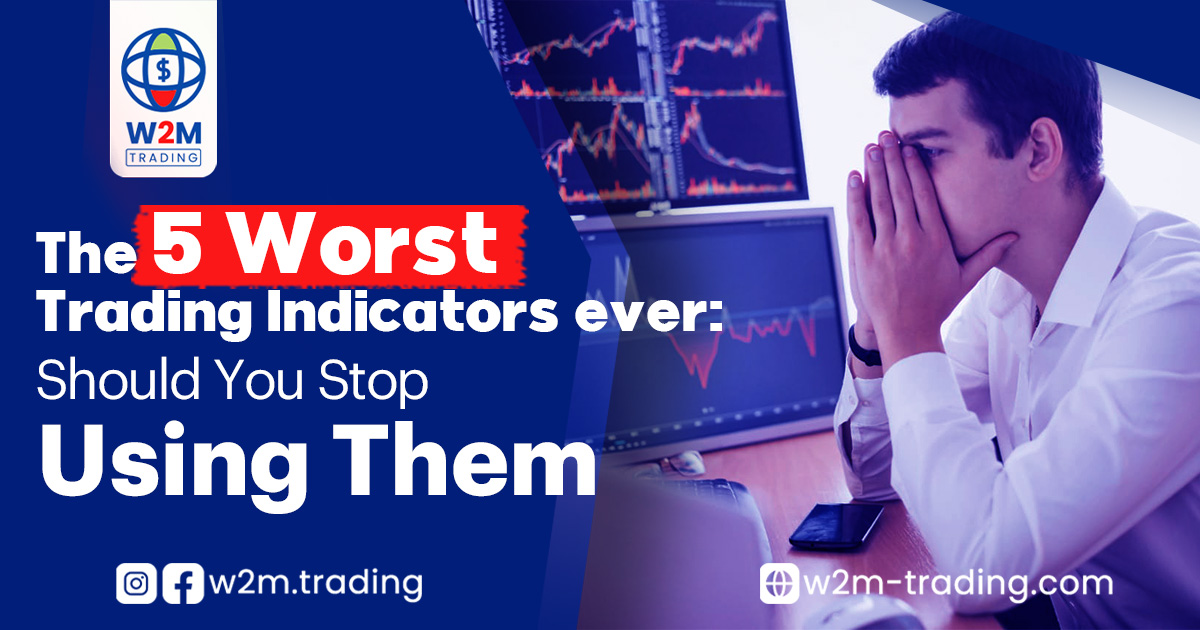- Attractive Education
- Beginner to Advance
- Flexible Timing

In the world of financial market trading, many strategies rely on technical indicators to guide decisions. However, with the abundance of indicators available, traders often find themselves using tools that may be ineffective under different market conditions. This article will discuss the five worst trading indicators of all time that may lead to losses instead of gains. We will explore how they are often misused and why you should consider stopping their use in certain cases.
In this article, we will cover five poor-performing indicators in trading:
We will explain in detail why these indicators are unreliable in some cases and how their use can be improved or replaced with more effective tools.
The ADX is an indicator used by traders to determine the strength of a market trend, whether it is upward or downward. It analyzes past prices to assess whether the market is in a strong or weak trend. Despite its popularity, the ADX has several issues that make it unreliable in many situations.
Drawbacks of ADX:
How to Improve ADX Usage:
To achieve better results with the ADX, it is best to combine it with other indicators that provide clear signals about market direction. For example, you can pair the ADX with momentum indicators like the RSI (Relative Strength Index) to confirm whether a trend is present and worth following.
The CCI is a tool used by traders to measure whether markets are overbought or oversold. It compares the closing price to the market’s average over a specific period. While useful in some cases, the CCI has flaws that can lead to false signals.
Drawbacks of CCI:
How to Improve CCI Usage:
The best way to use the CCI is to combine it with other indicators like the RSI or ADX. These tools work together to filter out false signals and improve the accuracy of trading decisions.
One of the most popular trading strategies is the moving average crossover. This strategy involves buying or selling when a short-term moving average crosses above or below a long-term moving average. Despite its widespread use, this method is considered one of the worst indicators in some cases.
Drawbacks of Moving Average Crossovers:
How to Improve Moving Average Crossover Usage:
To enhance the effectiveness of this strategy, combine it with other indicators like the ADX to determine trend strength or the RSI to identify overbought or oversold conditions.
The Stochastic Oscillator is used to identify overbought or oversold conditions in the market. While useful in some cases, it has issues that affect its accuracy.
Drawbacks of Stochastic Oscillator:
How to Improve Stochastic Oscillator Usage:
You can improve the Stochastic Oscillator’s effectiveness by combining it with other tools like the RSI or Japanese candlestick patterns to analyze price movements more comprehensively and reduce false signals.
Bollinger Bands are an indicator based on standard deviation around a moving average, used to measure market volatility. While helpful in some cases, it has flaws that can make its signals ineffective in certain markets.
Drawbacks of Bollinger Bands:
How to Improve Bollinger Bands Usage:
To increase the effectiveness of Bollinger Bands, combine them with indicators like the RSI and ADX to filter out false signals and improve decision-making accuracy.
Final Thoughts
While technical indicators are an essential part of technical analysis in forex and financial markets, their misuse can lead to poor trading decisions. In this article, we discussed the worst indicators traders should be cautious about, including the ADX, CCI, Moving Average Crossovers, Stochastic Oscillator, and Bollinger Bands.
Traders should remember that no single indicator is perfect. To succeed in the market, it is best to combine multiple tools and employ strategies that rely on a comprehensive understanding of market conditions.
You can watch a video on “The Worst Trading Indicators of All Time | Stop Using Them in Trading” on our YouTube channel through the following here
You can also follow everything related to trading through the educational series “Trading for Beginners” on our YouTube channel via this link
This site is protected by reCAPTCHA and the Google
Privacy Policy and
Terms of Service apply.